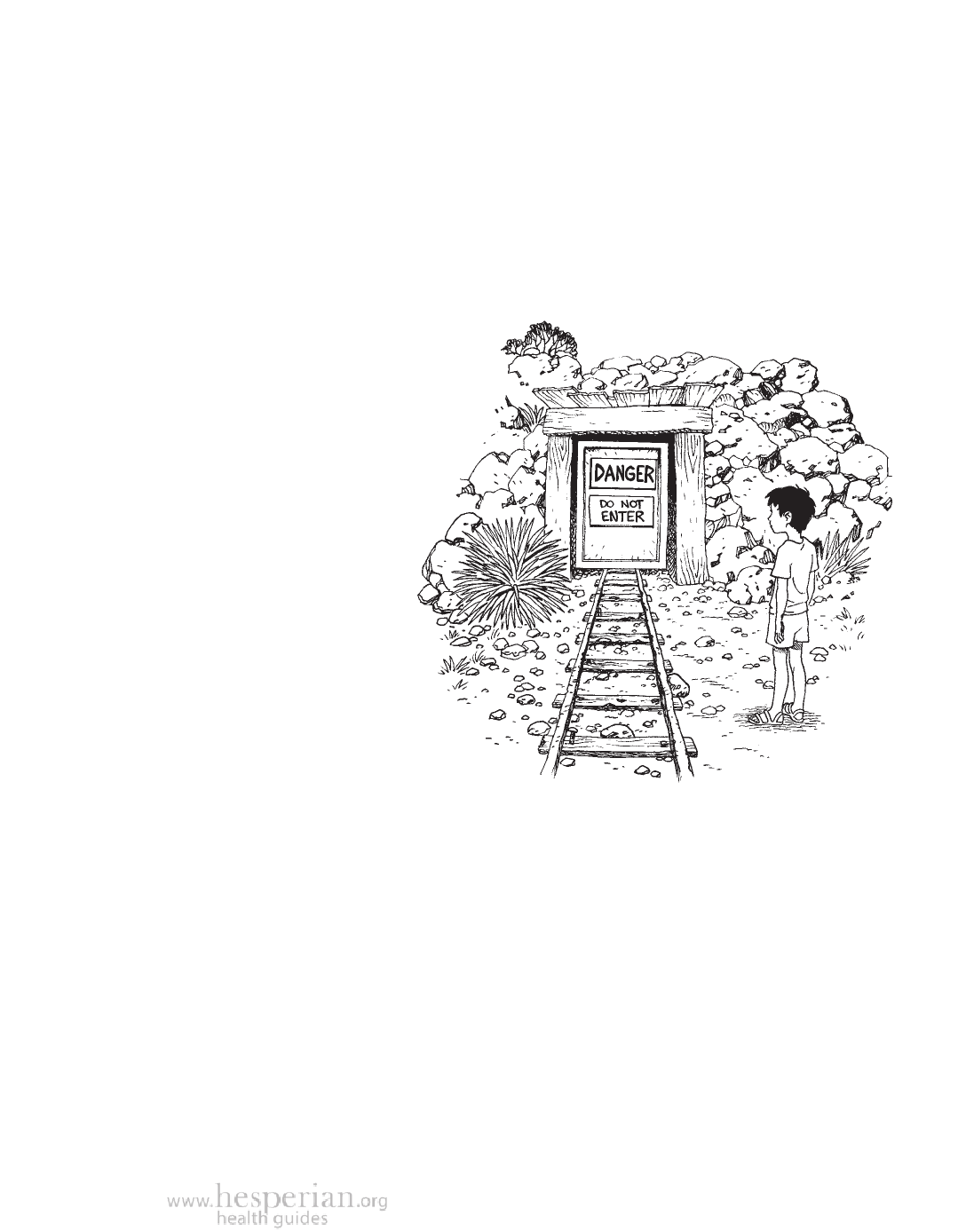
Wh en a m i n e close s 495
When a Mine Closes
Before a mining operation begins, the company must study what the
environmental and social effects of the mine will be. This study, called an
Environmental Impact Assessment or EIA (see Appendix B) should plan for ways
to reduce harm and to clean up the site when the mine is closed. It should
also make sure that people and communities harmed by mining activities are
paid for any damage they suffer.
When a mine is closed, the mining
operator, with oversight from the
government mining authority, is
responsible for restoring the site
to make it safe for future use.
Mining companies and mine
operators should:
• remove toxic materials,
machinery, and mining
structures.
• fill holes, close
off tunnels, fence
dangerous areas, and
clearly mark these
areas with signs.
• stabilize cliff faces, pit
walls, and waste dumps
to reduce erosion and
prevent collapse.
• restore soil and cover the area
with healthy soil and plants.
• restore damaged waterways.
• treat polluted water for as long as necessary.
In some countries, mining companies are required to put up money (called
a bond) before they begin work. The bond is a way to make sure that the
company cleans the site after the mine closes. The bond money is used if the
company goes bankrupt or does not have enough money to restore the area.
If the amount of the bond is less than the costs of restoring land and paying
for damages from mining, the company may not fulfill its responsibilities.
To make sure that companies fulfill their responsibilities, communities or
governments need to negotiate for a bond that is high enough. It is usually
better to demand one large bond for an entire project, rather than smaller
bonds for each separate part of the project.
A Community Guide to Environmental Health 2012